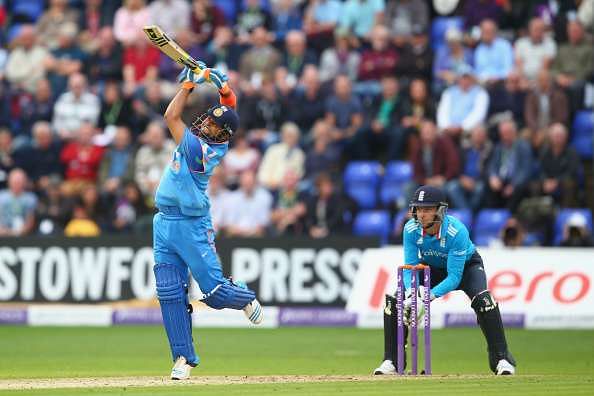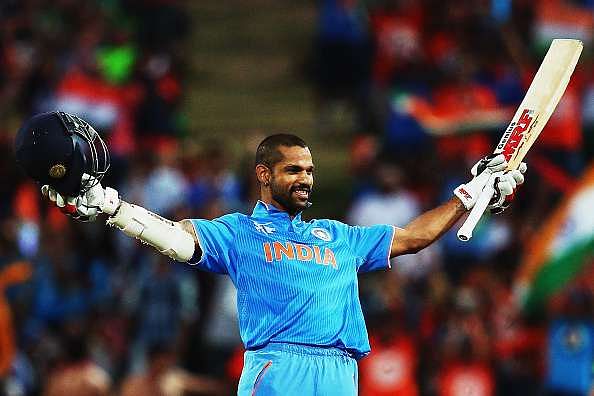
Is a good ODI player also a good T20 player and vice versa?

It has long been known that the skill sets required to succeed in Test cricket are different from those required to succeed in limited overs cricket. For starters, a solid defence is not exactly the first priority in the limited overs’ version of the game, but it is ‘ sine qua non’ for success as a batsman in Tests.
A bowler who is not a wicket taker still has a place in limited overs’ cricket, as long as he is able to stop runs, but he has no real place in a Test team. The list could go on and on.
A more pertinent question to ask is, whether a good ODI player is also a good T20 player and vice versa?
When T20 cricket was still an unknown quantity and was thought to be a young man’s game, and the doom of spinners, it was assumed that anyone who was a good ODI player was good enough to play T20 cricket.
Nearly a decade on since the inaugural World T20 in South Africa, the shortest version of the game is a fairly well-known quantity now. Spinners today form a vital part of most T20 sides, and players like Brad Hogg and Praveen Tambe, in their 40s, continue to compete in the best of T20 leagues around the world.
So while T20 cricket didn’t prove to be the doom for spinners or just a young man’s sport, does the assumption that T20 cricket and ODI cricket need the same skill sets to succeed, still hold true?
More differences in ODI and T20 Squads
India recently announced the squads for ODIs and T20Is against England, and the squads were quite different. Naturally, some players were common to both the ODI and T20 squads, but there were 5 players who made the ODI squad but not the T20 squad.
5 players = 1/3 of the squad!
This is about the same number of changes that would be made to the squad when a series switches from Tests to ODIs. Does this not suggest that teams have started to treat T20 cricket as distinct from ODI cricket, as ODI cricket was from Test cricket at one point, and still is.
Here is a more in-depth look at India’s T20 and ODI squads.
Players in both squads: Virat Kohli, Bhuvneshwar Kumar, Manish Pandey, Hardik Pandya, KL Rahul, Yuvraj Singh, Ravichandran Ashwin, Jasprit Bumrah, MS Dhoni, Ravindra Jadeja
Players in ODI Squad but not T20I squad: Shikhar Dhawan, Kedar Jadhav, Ajinkya Rahane, Umesh Yadav, Amit Mishra
Players in T20I Squad but not ODI squad: Yuzvendra Chahal, Mandeep Singh, Rishabh Pant, Suresh Raina, Ashish Nehra
T20 Cricket physically less demanding on bowlers
The case of Ashish Nehra does say a lot about how T20 and ODI cricket are now seen as different and distinct. Nehra – never the fittest of players, and not exactly a spring chicken anymore, is seen to be fit enough bowl his 4 overs in T20Is, but not the 10 overs he would have to get through in ODIs.
So in a way, T20 cricket is seen as being less challenging physically for bowlers than ODI cricket. This is further backed by the cases of Hogg and Tambe. Both players, in their 40s, play effective roles for their T20 sides, but in all likelihood will not be picked to play in a one-day league.
Batting in ODIs is more multi-dimensional than T20

The cases of Dhawan, Rahane and Raina, show how batting in T20 cricket is now seen to be different from batting in ODIs.
In the 50-over format of the game, batting is not always in top gear, like it is in T20s. In ODIs, the innings shifts through different gears, and the total needs to be built step by step.
A score of 90, even at less than run a ball, is often a good contribution in ODIs. The lower order can then launch in the final 10 overs. It is important to give the lower order a good platform and leave the team with wickets in hand entering the final 10 overs of the innings.
So ideally the first 3 or 4 batsmen are required to bat 40 overs of the game, but they must do so while keeping the run rate ticking at a brisk pace. A fine balance needs to be struck between not losing wickets and scoring. The likes of Dhawan and Rahane have shown the ability to do this, and thus still have a place in the ODI side. ODI cricket puts primary importance on a batsman’s offence, but his defence still has a role to play.
Raina meanwhile can be relied on to deliver a quick 20 or 30 in T20Is as he has the stroke play for it, but his effectiveness in ODI cricket is rarely felt.
A 5 overs’ stay at the crease is okay in T20s, but a batsman is expected to last longer than just 5 overs in ODIs. Often in ODIs a batsman has to wear multiple hats and shift gears. A top order batsman is also expected to play the role of a finisher if need be, and a finisher often has to shore things up in the event of a top order collapse.
Raina, who has all the strokes, remains a useful T20 batsman, but the selectors feel that they have better options than Raina for the ODI side, where batting is a lot more multi-dimensional.
As people have started to know T20 cricket better, they have also gotten to know ODI cricket better, and with this knowledge has also come the understanding of how the two are different.
These two versions of cricket have started to evolve into 2 distinct and independent formats, and success in one format doesn’t guarantee success in the other.
As the understanding of T20 cricket grows, so will the distinction between the two limited overs’ version of cricket and it is not unlikely that some day the national sides will field three nearly distinct squads in Tests, ODIs and T20Is.